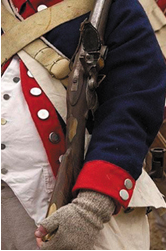Historic Morris County: How It All Began

Sometimes a trip is more than a trip it’s an adventure! An escape from our daily routine and an opportunity to discover something new and to explore. It’s about embracing and enjoying unique experiences, some of which can be found a stones throw away on a weekend… by car!
Rich in historic lore, tradition, and awaiting your exploration is Morris County! Located approximately 30 miles northwest of New York City, the area was originally inhabited by the Lenape Indians and then settled by New Englanders of European origin in the early 1700s while it was known as the British Province of New Jersey.
Morris County was formed by an Act of the State Legislature on March 15, 1738. Named after Colonel Lewis Morris, then Governor of the Province of New Jersey, the region originally included what are now the counties of Morris, Sussex and Warren. Several years after its founding, the community of West or New Hanover was renamed “Morris Town” and designated the county seat of
During the Revolutionary War and down to today, Morristown has been known as The Military Capital of the American Revolution, as it played host during two winter encampments by General George Washington and the Continental Army. Much of the history of these encampments is preserved today at Morristown National Historical Park.
The Industrial Revolution of Morris County
In the years following the Revolutionary War, Morris County became a leader in the iron ore mining and fabrication industry. It was in Morristown that the steam boiler and some of the machinery for the S.S. Savannah, the first steamship to cross the Atlantic Ocean, and parts of the first American locomotive were manufactured. The telegraph was perfected in Morris County by Samuel F. B. Morse and Alfred Vail. In fact, the old barn in which the two men conducted their experiments and sent the first message “A patient waiter is no loser, still stands.
In 1831, the Morris Canal, conceived and developed by Morristown resident George P. Macculloch, was begun. Crossing the state from Phillipsburg to Newark, a distance of 102 miles, it played a major role in the movement of iron, coal and freight from mines to factories, and made Morris County an important transportation center.
The Morris County iron industry faced ruin when iron ore was discovered near Lake Superior in Michigan where it could be mined more cheaply. As the population of the county grew and the methods of transportation improved, new industries sprang up throughout the county, many using the iron ore as raw materials for finished products.


